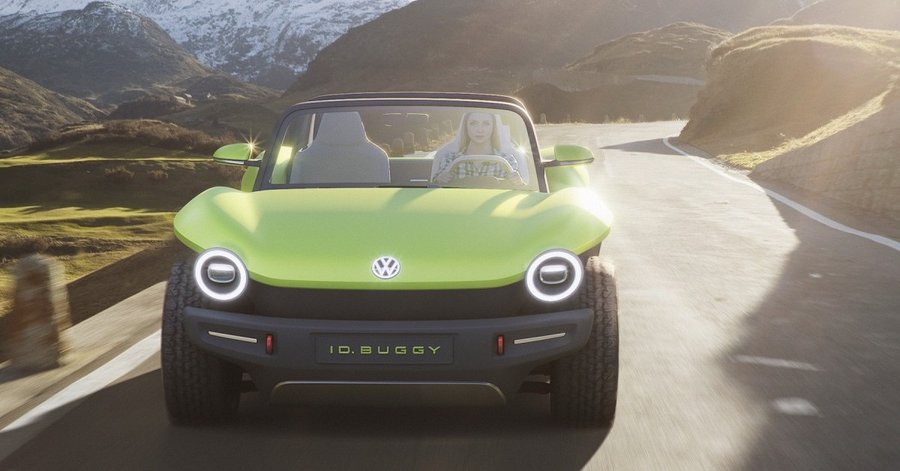VW's electric I.D. Buggy Concept can be RWD two-seater or AWD four-seater fun

Volkswagen might be saying goodbye to the classic Bug, but it's saying hello to the classic Buggy. After teasing the launch with design sketches last year, Volkswagen debuted the I.D. Buggy Concept at the 2019 Geneva Motor Show with an electric powertrain and the ability to convert from a rear-wheel-drive two-seater to an all-wheel-drive four-seater.
The I.D. Buggy Concept is a new chapter in the book of MEB, which translates from German as Modular Electrification Toolkit, Volkswagen's new platform for its upcoming electric vehicles. It joins the I.D. hatchback, I.D. Buzz van, the I.D. Buzz Cargo van, and the Seat El-Born as some of the several vehicles that will utilize the same adjustable setup.
In its core form, the Buggy Concept is rear-wheel drive, thanks to an electric motor on the rear axle that makes 201 horsepower and 228 lb-ft of torque. Linked to a single-speed transmission, it has a claimed top speed of 99 mph and can do 0-to-62 mph in 7.2 seconds. A 62 kWh battery is integrated into the floor of the car, as in most electric vehicles, and provides enough power to drive the car up to 155 miles on a single charge, according to the Euro Worldwide Harmonized Light Vehicle Test Procedure (WLTP). VW also says that the platform allows for a second motor to be attached to the front axle to make the Buggy four-wheel-drive.
VW didn't mess around with the pure form of the Dune Buggy. The concept carries the same raised no-door, no-roof two-seater magic it did back in the day. The concept is 160 inches long, 74.4 inches wide, 57.6 inches tall, and has a 104.3-inch wheelbase. On 18-inch wheels and BFGoodrich All-Terrain T/A off-road tires, it has 9.4 inches of ground clearance. For comparison, the VW Golf is 167.5 inches long, 70.8 inches wide, 57.2 inches tall, and has a 103.8-inch wheelbase. A standard Jeep Wrangler has 9.7 inches of ground clearance. VW does offer a twist on the concept, with a mention that it could be converted to a 2+2.
The composite body looks like a modern caricature of the old buggy. It has a sharply angled raised hood, exaggerated swoopy fenders, giant bugeye LED headlights, a rear targa bar, aluminum side sills and a brush guard-like front bumper, and a skeletal-looking body that floats high above the ground. The top portion is painted Fern Green, while the bottom is Grey Tech Blue. A black tarp can be attached from the windshield to the rear bar for cabin protection.
VW prepared the interior for outdoor use, as well. The entire insides are waterproof for easy cleanup after days at the beach or in the wilderness. The hexagonal steering wheel is the center of the simplistic cabin and features touch controls, as well as a digital instrument cluster.
As we previously explored, the I.D. Buggy is a starting point for aftermarket bodyshops to make their own marks on Volkswagen history. Just as the previous VW Dune Buggy was one of many custom car bodies (a la the Meyers Manx) that sat on the old VW Beetle platform, the new I.D. Buggy is but one option for what could be done on the MEB platform. VW is encouraging startups to take advantage and build their own customs.
As of now, the concept is simply a one-off to show how the MEB platform can be used. We have no doubt somebody will take Volkswagen up on that once the I.D. hatchback is rolled out.
Related News
